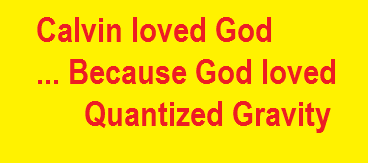@heddie
Not widely appreciated … but still true.

@heddie
Not widely appreciated … but still true.

I teach Hebrew and Genesis here at the U. of Montana and would like to offer a couple of thoughts:
First, I read the two Genesis creation story literally - but in the Hebrew. That’s important because biblical Hebrew is a qualititatively different language that many (most) contemporary Western languages - especially English. I want to say a few words about this before giving you some examples.
Biblical Hebrew is a very small language (few words) and English is a very large one (lots of words). Because biblical Hebrew has few words, its ability to represent abstract ideas is largely (but not wholly) non-existent. Linguists call biblical Hebrew a concrete language because most of its words refer to concrete, not abstract, things - things that can be seen, heard, felt, touched, tasted. Words like life and intelligence are represented as blood and heart respectively. Plants were not thought of as living because they didn’t breath. The biblical texts are replete with idioms. It’s fair to say that much of the narrative structure of the Bible is idiomatic and largely symbolic.
With that out of the way, here’s how to read Genesis 1:4-5 literally in Hebrew:
And Elohim saw the light as good. Then, Elohim caused the light to alternate with the dark. Then Elohim called out to the light, yom. And, to the dark He called out, layla
So here we have yom and layla whose literal description is that of regions in which light is present that alternate with regions where light is absent. Literally, there is no conception that these two regions alternate temporally. For example, the author does not write something along the lines of,
And Elohim separated the light from the dark according to their times…
Or,
And Elohim caused the dark to follow the light…
.Literally, yom and layla are names of states of existence. In the Hebrew, Yom and Layla could just as well be used to describe the adjacent white and black squares of a chess board.
Why did the author choose to represent Yom and Layla spatially and not temporally? The prevailing opinion seems to be that the author was attempting to demythologize time as tethered to nature. In the first creation story, time is represented as a linear, non-repeating, ever increasing sequence of events - much like the frames of a 8mm film strip. Time does not cycle with the moon, stars, seasons, or what have you. God is the editor and He moves back and forth between the frames editing as He goes. He can do this because He is outside the film. He is transcendent. This is exactly the message of the first creation story - a story of a transcendent deity not subject to nature or a time tethered to nature.
There’s so much more here, but I think I’ll stop. If you want to get really into it, you can read a detailed commentary here.
Cheers,
This topic was automatically closed 6 days after the last reply. New replies are no longer allowed.
“Let your conversation be always full of grace, seasoned with salt, so that you may know how to answer everyone.” -Colossians 4:6
This is a place for gracious dialogue about science and faith. Please read our FAQ/Guidelines before posting.